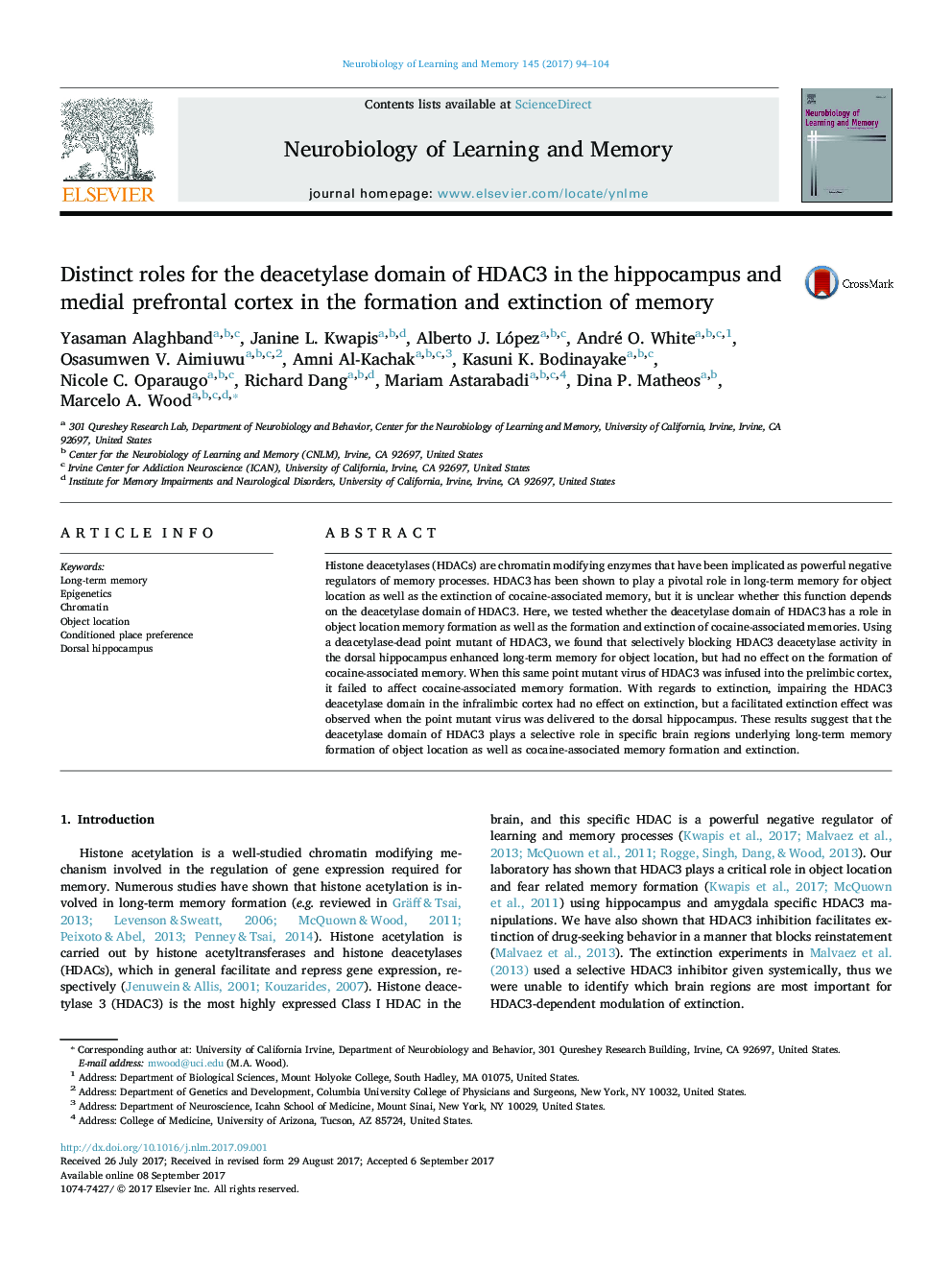| Article ID | Journal | Published Year | Pages | File Type |
|---|---|---|---|---|
| 5043088 | Neurobiology of Learning and Memory | 2017 | 11 Pages |
â¢Blocking HDAC3 deacetylase activity in the DH enhanced OLM but had no effect on CPP.â¢Impairing the HDAC3 deacetylase domain in the PrL had no effect on CPP formation.â¢Blocking HDAC3 deacetylase activity in the IL had no effect on extinction.â¢Disrupting HDAC3 deacetylase activity in the DH facilitated extinction.
Histone deacetylases (HDACs) are chromatin modifying enzymes that have been implicated as powerful negative regulators of memory processes. HDAC3Â has been shown to play a pivotal role in long-term memory for object location as well as the extinction of cocaine-associated memory, but it is unclear whether this function depends on the deacetylase domain of HDAC3. Here, we tested whether the deacetylase domain of HDAC3Â has a role in object location memory formation as well as the formation and extinction of cocaine-associated memories. Using a deacetylase-dead point mutant of HDAC3, we found that selectively blocking HDAC3 deacetylase activity in the dorsal hippocampus enhanced long-term memory for object location, but had no effect on the formation of cocaine-associated memory. When this same point mutant virus of HDAC3 was infused into the prelimbic cortex, it failed to affect cocaine-associated memory formation. With regards to extinction, impairing the HDAC3 deacetylase domain in the infralimbic cortex had no effect on extinction, but a facilitated extinction effect was observed when the point mutant virus was delivered to the dorsal hippocampus. These results suggest that the deacetylase domain of HDAC3 plays a selective role in specific brain regions underlying long-term memory formation of object location as well as cocaine-associated memory formation and extinction.
